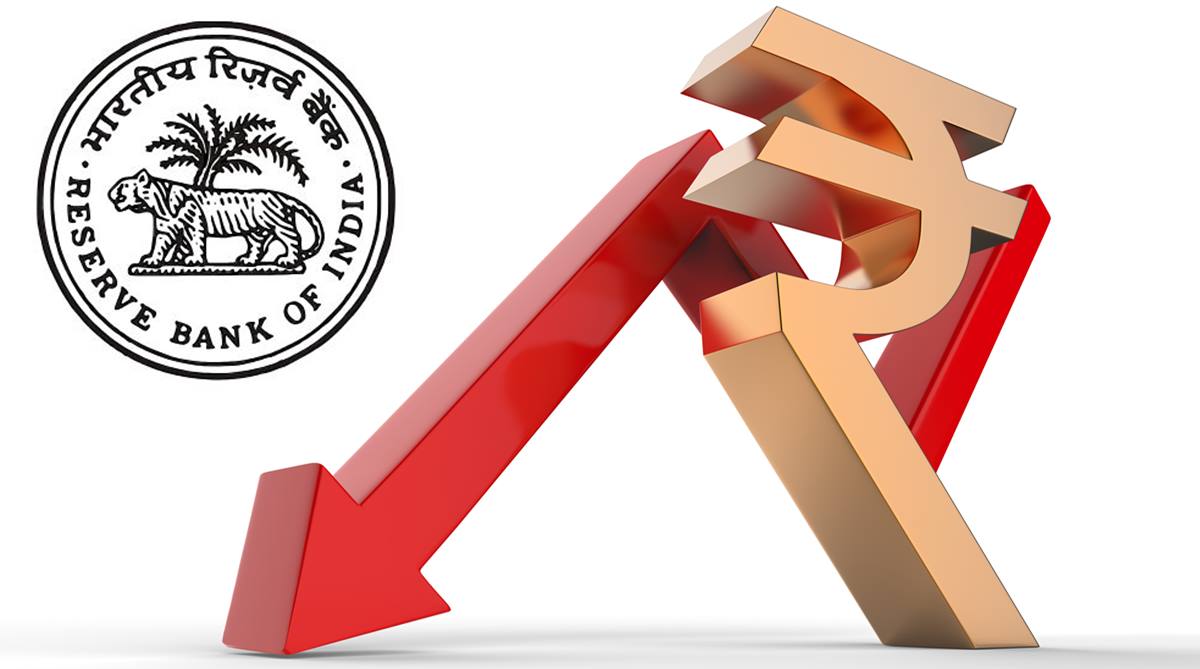From 1 to 73 rupees (72.91) to the same dollar in 71 years (15 August 1947 to 12 September 2018) shatters all economic theories. What is battering the rupee? India’s economic subjugation. Just have a look at Section 40 of the RBI Act, 1934. It stipulates that the rupee’s exchange rate is governed by India’s obligation to the International Monetary Fund. Is India sovereign? Politically yes, but economically no. Not yet, otherwise Section 40 of the RBI Act would have been knocked out by now. The tragedy is that in international relations political sovereignty is subservient to economic sovereignty.
No government from 1947 has been able to withstand the dollar’s onslaught on the rupee. It took 19 years for 1 rupee to sink to 4.76 rupees to a dollar. Then on 6 June 1966, the US coerced India to devalue the rupee by a hefty 57 per cent from 4.76 to 7.50 a dollar. Further dose of rupee bashing followed in 1981 when IMF sanctioned India’s biggest ever – 5.8 billion dollar – loan.
Advertisement
In July 1991, two massive doses of devaluation were inflicted upon the rupee. In 1992 rupee received further battering under the garb of “partial convertibility”. In 1993 India was forced to switch over to the dollar (from pound sterling) as its intervention currency. Subsequently, on 1 June, 2000, when FERA (Foreign Exchange Regulation Act), 1973 was replaced by FEMA (Foreign Exchange Management Act), 1999, the proviso to Section 6 (2) of the new act restrained the Reserve Bank of India from imposing any restriction on foreign outward remittances on amortization of loan or foreign direct investment. This was an emphatic statutory recognition of rupee’s bleak future. The rupee’s downfall has been irreversible and unstoppable.
READ | Government, RBI to check rupee’s undue slide
Slowly, yet surely, India has been gripped by dollar holders. As India starves for dollars, the stranglehold of external forces over India tightens. Is it any surprise that the rupee moved from 58 to 73 a dollar in the last four years? Does it require any economist or astrologer to predict which way the rupee would move in future?
Rupee’s nosedive is preventing India from becoming an economic superpower. Inflation is setting in. Consequent price rise is hitting the poor directly. Foreign investors are moving away to stable investment destinations with higher yield on the dollar. Exporters are delaying repatriation of export proceeds, hoping the fall will fall further. Consequential adverse impact on Current Account Deficit (CAD) [now exceeding 2.5 percent of GDP] and trade deficit [18 billion dollars in July, 2018] has been severe. Amid this dismal situation, India’s foreign exchange reserves dwindled swiftly from 425 to 400 billion dollars.
The cost of external borrowing is shooting up. For example, cost of Bullet Train loan (Japanese Yen (JPY) 150,000 crores) has gone up phenomenally from October 2017 till today with rupee purchasing power diminishing from 1.72 to 1.53 JPY. Similarly, cost of imports – defence equipment, petroleum and fertilizer are shooting up. These dent fiscal deficit directly.
Utterances made by responsible persons at the helm that the Turkish Lira rate and other external factors (like oil price, trade war) are wreaking havoc on the rupee make no sense. These reflect inadequate understanding to grasp the nuances of India’s exchange control regulations. The Indian rupee is guarded/protected by India’s impregnable exchange control regulations. The rupee cannot (beyond a small limit) cross the customs/national barrier. The rupee is not subject to vicissitudes of international forex market. The rupee cannot be traded outside India. The situation has remained substantially the same since 1947. Rupee’s rate is determined entirely by the forex market situated in India.
Forex market in India comprises only of a few banks, which follow diktats of the RBI. The RBI, in turn, follows diktats of the Central Government. The Central Government, in turn, follows diktats of the IMF (read the US). These follow directly from the wordings of Section 40 of the RBI Act, 1934.
What is the solution? RBI should immediately enter India’s forex market with a two-way quotation (say INR 65/66 to a dollar to start with) till rupee starts appreciating. I am of the firm view that RBI’s intervention can never dent forex reserves since banks can’t buy dollars from RBI beyond their commercial requirements. Also, RBI’s regulations limit overnight speculative position of each bank. Regretfully, economists, and those at the helm, fail to grasp this simple regulation that the RBI administers ably.
Once the rupee appreciates, to say Rs 58 to the dollar, as was the situation in May 2014, India can emerge as an economic superpower. If the Government/RBI is unable to muster the courage to follow this prescription, all political parties must unite to amend the RBI Act, 1934 to knock out Section 40 that impinges upon India’s economic sovereignty. Rupee exchange rate is too sensitive an issue and it impacts 1.3 billion Indians directly or indirectly.
Alternatively, India may consider discarding dollar as its intervention currency and explore the possibility of settling its trade in SAARC countries by means of local currency (parallel to the Euro). If SAARC countries unite to discard the dollar, entire region would emerge economically stronger. This is the need of the hour. India must take the lead. A weak currency vis-à-vis the dollar only encourages stashed-funds- wallas, Panama-wallas, and all dollar holders.
(The writer is a former Additional Solicitor-General of India and a Senior Advocate, Supreme Court of India.)











